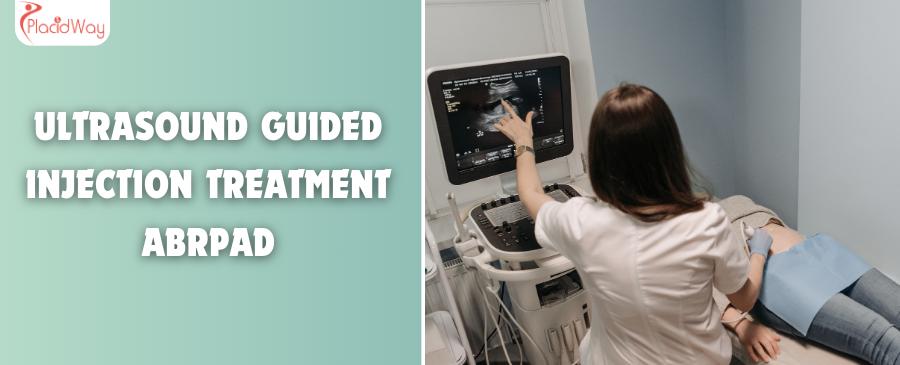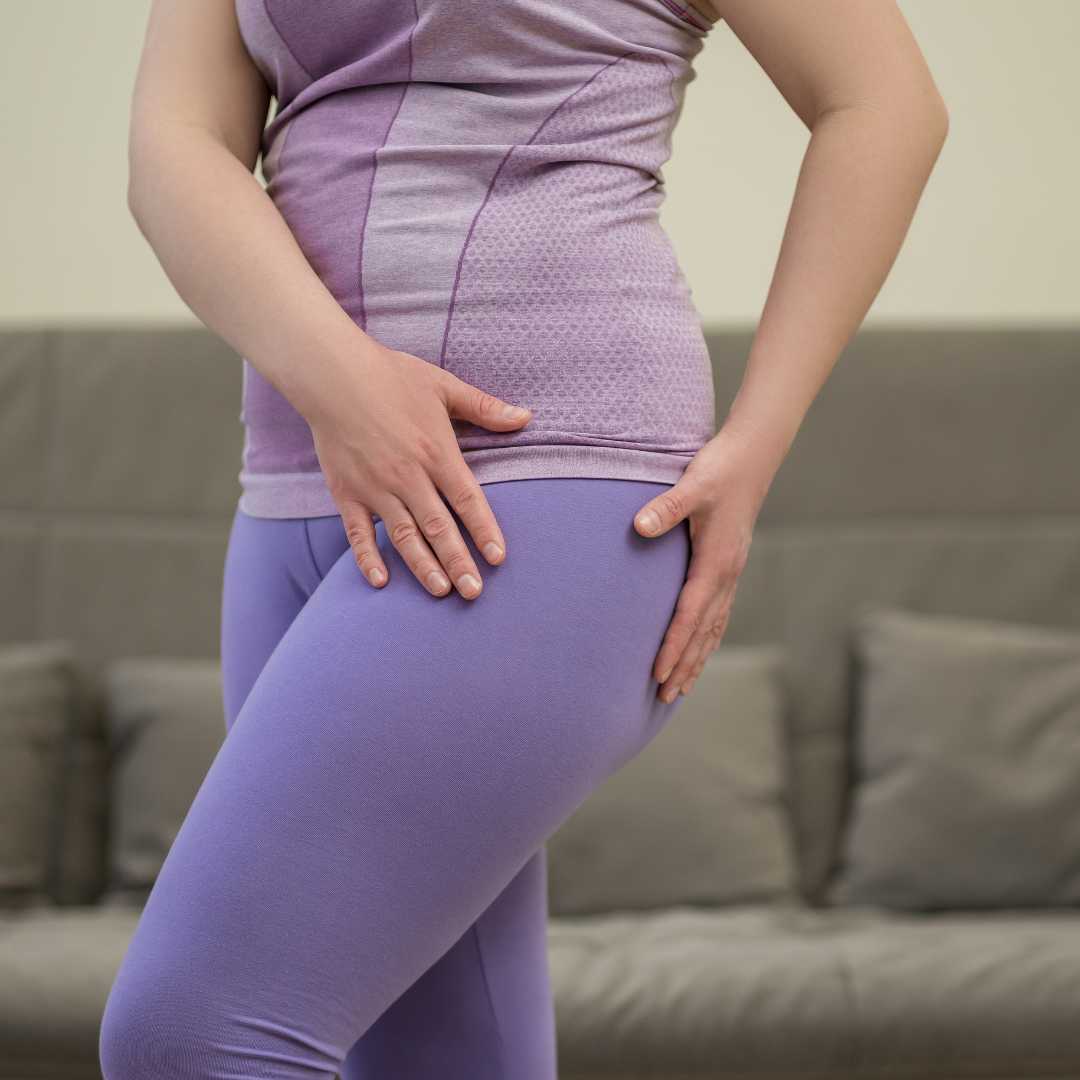
Find Lasting Relief: Precision Pain Treatment with Ultrasound Guided Injections
Living with chronic pain can be debilitating, affecting every aspect of your life. Whether it's a persistent ache in your shoulder, a nagging knee problem, or nerve pain that just won't quit, finding effective relief is crucial. For many, conventional treatments fall short, leaving them searching for more targeted and potent solutions.
This is where Ultrasound Guided Injections come into play – a groundbreaking approach that offers unparalleled precision in pain management. Imagine a doctor being able to see exactly where your pain originates, and then delivering medication with pinpoint accuracy directly to that spot. That's the power of ultrasound guidance.
An ultrasound-guided injection is a medical procedure where real-time ultrasound imaging is used to visualize internal body structures, such as joints, tendons, muscles, ligaments, and nerves, while an injection is being administered. This guidance ensures the needle is placed exactly where it needs to be, maximizing the effectiveness of the medication and minimizing the risk of complications.
Many patients seek this treatment when experiencing conditions like:
- Persistent joint pain (knees, shoulders, hips)
- Chronic tendonitis or bursitis
- Nerve entrapment syndromes
- Pain from soft tissue injuries
- Back or neck pain not responding to other therapies
These pains often stem from inflammation, injury, overuse, or degenerative changes. If you've been wondering, "what is an ultrasound guided injection for knee pain?" or "where can I get precise pain relief?" this guide is for you. It's especially relevant for those considering medical tourism, as these advanced procedures are often more accessible and affordable abroad without compromising on quality.
What symptoms indicate you might need an ultrasound-guided injection?
Identifying the right time to consider an ultrasound-guided injection often comes down to the nature and persistence of your pain. Here are common symptoms and conditions that frequently benefit from this targeted approach:
- Chronic Joint Pain: If you experience ongoing pain, stiffness, and reduced range of motion in your knee, shoulder, hip, elbow, or ankle, especially if it worsens with activity. This could be due to conditions like osteoarthritis, rheumatoid arthritis, or post-traumatic arthritis.
- Tendonitis and Bursitis: Sharp or aching pain around tendons (e.g., Achilles, rotator cuff, patellar) or bursae (e.g., hip, shoulder, elbow), often accompanied by swelling and tenderness. Patients might search for "ultrasound guided injection for shoulder pain" or "tennis elbow injection."
- Nerve Entrapment: Symptoms such as numbness, tingling, burning, or sharp pain radiating along a limb. Conditions like carpal tunnel syndrome, tarsal tunnel syndrome, or sciatica (where nerve blocks are beneficial) are prime examples.
- Muscle Pain and Trigger Points: Localized, tender spots in muscles that refer pain to other areas. This is common in chronic neck or back pain.
- Plantar Fasciitis: Heel pain, particularly with the first steps in the morning, which can be addressed with an injection into the plantar fascia.
- Ganglion Cysts or Baker's Cysts: Swelling or lumps around joints that cause discomfort or restrict movement, often requiring aspiration and sometimes injection.
If conservative treatments like physical therapy, oral medications, and rest haven't provided sufficient relief, a doctor might recommend an ultrasound-guided injection to directly address the source of your discomfort.
What are the common causes of conditions treated by ultrasound-guided injections?
Understanding the root causes of your pain is vital for effective treatment. Many painful conditions addressed by ultrasound-guided injections share common origins:
- Degenerative Changes (Arthritis): As we age, the cartilage in our joints can wear down, leading to osteoarthritis. This causes bone-on-bone friction, inflammation, and pain. Conditions like "knee osteoarthritis pain" or "hip joint degeneration" are frequently searched.
- Overuse and Repetitive Strain Injuries: Repeated movements, often seen in athletes or certain occupations, can inflame tendons (tendinitis) or bursae (bursitis). Examples include "rotator cuff tendinitis," "golfer's elbow," or "runner's knee."
- Acute Injuries and Trauma: Sprains, strains, tears, or direct impacts can lead to acute inflammation and pain in soft tissues, requiring precise treatment for healing.
- Inflammatory Conditions: Autoimmune diseases like rheumatoid arthritis can cause widespread joint inflammation.
- Nerve Compression: Swelling, bone spurs, or soft tissue impingement can put pressure on nerves, causing pain, numbness, and tingling. This includes conditions like carpal tunnel syndrome or nerve root compression in the spine.
- Structural Abnormalities: Sometimes, anatomical variations or the formation of cysts can lead to pain and require targeted intervention.
These underlying issues often create localized inflammation, swelling, and irritation, which ultrasound-guided injections are designed to alleviate directly.
What types of ultrasound-guided injections are available for pain relief?
The type of medication injected depends on the specific condition, its cause, and the desired outcome. Ultrasound guidance is key for all, ensuring the substance reaches its intended target.
- Corticosteroid Injections (Steroid Shots): The most common type, corticosteroids are powerful anti-inflammatory medications. They reduce swelling and pain in joints, tendons, or bursae. Patients often search for "steroid injection for knee pain" or "cortisone shot shoulder." While highly effective for inflammation, they are not typically a long-term solution and are often limited in frequency.
- Hyaluronic Acid Injections (Viscosupplementation): Often called "gel shots," these injections replenish the natural lubricating fluid in arthritic joints, particularly the knee. Hyaluronic acid helps improve joint mobility and reduce pain, mimicking the joint's natural fluid. Many ask, "is hyaluronic acid injection good for knee arthritis?"
- Platelet-Rich Plasma (PRP) Injections: PRP uses a concentration of your own platelets, derived from a blood sample, which contain growth factors that can stimulate healing and reduce inflammation in damaged tendons, ligaments, and cartilage. This is a popular option for sports injuries and degenerative conditions.
- Prolotherapy: Involves injecting a natural irritant (often a dextrose solution) into ligaments or tendons to stimulate the body's natural healing processes and strengthen weakened connective tissues.
- Nerve Blocks: Local anesthetics, sometimes combined with steroids, are injected near specific nerves to block pain signals. This is used for conditions like sciatica, carpal tunnel syndrome, or specific types of headaches.
- Local Anesthetic Injections: Used primarily for diagnostic purposes or immediate, temporary pain relief, often for trigger points or joint pain.
- Aspiration: Although not an injection of medication, ultrasound guidance is crucial for accurately draining excess fluid from swollen joints or cysts (e.g., Baker's cysts, ganglion cysts) before, or sometimes as part of, an injection procedure.
Your doctor will determine the most appropriate type of injection based on your diagnosis and treatment goals.
Who is an ideal candidate for an ultrasound-guided injection?
Ultrasound-guided injections are a versatile treatment, but they are not for everyone. The best candidates typically fit one or more of these criteria:
- Patients with Localized Pain: The procedure is most effective for pain concentrated in a specific area, like a single joint, tendon, or nerve. It's less suited for widespread, generalized body pain.
- Unresponsive to Conservative Treatments: If you've tried physical therapy, rest, oral anti-inflammatory drugs, or topical creams without significant improvement, your doctor might suggest an injection. Patients might ask, "when should I get an ultrasound guided injection?"
- Need for Precise Medication Delivery: For areas that are difficult to access, or when adjacent structures need to be avoided, ultrasound guidance is invaluable. For example, injecting small joints or deep structures requires extreme precision.
- Seeking Non-Surgical Options: Many people prefer to explore less invasive treatments before considering surgery. Injections can provide significant relief, potentially delaying or even preventing the need for surgery.
- Diagnosed with Specific Conditions: Individuals with confirmed diagnoses of osteoarthritis, tendinitis, bursitis, certain nerve entrapments, or muscle trigger points are often excellent candidates.
- Athletes and Active Individuals: For sports injuries where rapid and accurate intervention is crucial for recovery and return to activity.
- Tolerance for Injections: While the procedure is generally well-tolerated, individuals with a severe phobia of needles may find it challenging, though local anesthetics are used to minimize discomfort.
It's important to have a thorough consultation with a medical professional to determine if an ultrasound-guided injection is the right choice for your specific condition.
What is the typical recovery time after an ultrasound-guided injection?
One of the appealing aspects of ultrasound-guided injections is the relatively short recovery period compared to surgical interventions. However, recovery can vary based on the type of injection and the area treated.
- Immediate Post-Procedure: You may feel some numbness from the local anesthetic right after the injection, which typically wears off within a few hours. Mild soreness or aching at the injection site is common for 1-2 days.
- Activity Restrictions:
- Corticosteroids/Hyaluronic Acid: Most doctors recommend limiting strenuous activities, heavy lifting, or high-impact exercise for 24-48 hours. You can usually resume light daily activities immediately.
- PRP/Prolotherapy: As these treatments aim to stimulate healing, your doctor might recommend more prolonged rest or modified activity for 1-2 weeks to allow the healing process to begin effectively.
- When Will I Feel Relief?
- Corticosteroids: Pain relief usually begins within 24-72 hours, reaching its peak effectiveness over several days to a week. The duration of relief can vary from weeks to months.
- Hyaluronic Acid: Relief is often gradual, developing over several weeks after the injection. Multiple injections might be part of a treatment course.
- PRP/Prolotherapy: Since these stimulate natural healing, significant improvement may take several weeks to months as new tissue forms.
- Managing Discomfort: Applying ice packs to the injection site can help reduce swelling and discomfort. Over-the-counter pain relievers (like acetaminophen) may be recommended, but avoid NSAIDs (e.g., ibuprofen) if you received PRP, as they can interfere with the healing process.
Always follow your doctor's specific post-injection care instructions for optimal results and to minimize any potential side effects.
What are the potential risks and side effects of ultrasound-guided injections?
While ultrasound-guided injections are considered very safe due to the precision offered by imaging, like any medical procedure, there are potential risks and side effects. The good news is that serious complications are rare.
Common, Minor Side Effects:
- Pain or Soreness at Injection Site: This is normal and usually subsides within a day or two.
- Bruising: Minor bruising is possible, especially if a small blood vessel is nicked.
- Temporary Numbness/Weakness: If a local anesthetic is used, you might experience temporary numbness or weakness in the area for a few hours.
- "Steroid Flare": With corticosteroid injections, some patients experience a temporary increase in pain for 24-48 hours before the relief sets in.
Less Common, More Serious Risks (Minimised by Ultrasound Guidance):
- Infection: Any skin penetration carries a small risk of infection. Sterile techniques are always used to minimize this risk.
- Bleeding: Although rare, there's a risk of bleeding, especially for individuals on blood-thinning medications.
- Allergic Reaction: To the injected medication or anesthetic. This is rare but possible.
- Skin Discoloration/Fat Atrophy: With corticosteroid injections, localized lightening of the skin or thinning of the fatty tissue around the injection site can occur, though it's typically temporary or minor.
- Nerve Damage: Extremely rare with ultrasound guidance, as the practitioner can visualize nerves and avoid them.
- Tendon Weakening/Rupture: Repeated corticosteroid injections into tendons (especially weight-bearing tendons) can potentially weaken them over time, increasing rupture risk. This is why injection frequency is limited.
- Increased Blood Sugar: Diabetics may experience a temporary rise in blood sugar levels after a corticosteroid injection.
Your doctor will discuss these risks with you, weigh them against the potential benefits, and take all necessary precautions to ensure your safety.
How do ultrasound-guided injection costs compare worldwide?
The cost of an ultrasound-guided injection can vary dramatically depending on several factors: the type of medication used (e.g., steroid vs. PRP), the complexity of the injection site, the clinic's reputation, the doctor's fees, and most significantly, the country where the procedure is performed. For patients seeking affordability without compromising on quality, medical tourism offers compelling alternatives.
| Country | Average Cost Range (USD) | Notes |
|---|---|---|
| United States | $500 - $2,500+ | Highly variable, depends on insurance, type of injection (e.g., PRP is more expensive). |
| Canada | $300 - $1,500+ | Costs vary by province and clinic; often covered by provincial health plans for certain conditions. |
| United Kingdom | £250 - £1,000+ ($300 - $1,200+) | Private clinics offer quicker access; costs depend on London vs. regional, specialist fees. |
| Mexico | $200 - $800 | Popular for medical tourism due to proximity to US and lower costs. |
| Costa Rica | $250 - $700 | Known for good quality medical care and pleasant recovery environment. |
| India | $150 - $600 | Very competitive pricing, high volume of patients, excellent medical infrastructure. |
| Thailand | $200 - $700 | Combines affordability with high-quality facilities and hospitality. |
| Turkey | $180 - $650 | Emerging medical tourism hub with modern clinics and experienced specialists. |
These figures are estimates and can fluctuate. Always request a detailed quote from your chosen clinic or medical tourism facilitator.
Why consider traveling abroad for an ultrasound-guided injection?
For a growing number of patients, seeking medical care beyond their home borders, particularly for procedures like ultrasound-guided injections, has become an attractive option. The reasons are compelling:
- Significant Cost Savings: As seen in the cost comparison table, the price difference can be substantial. For those without adequate insurance coverage or facing high deductibles, traveling abroad can make essential treatments affordable.
- Shorter Wait Times: In some countries, public healthcare systems can have long waiting lists for specialist appointments and procedures. Medical tourism offers the ability to schedule treatment promptly, avoiding prolonged pain and disability.
- Access to Advanced Technology and Specialists: Many medical tourism destinations boast state-of-the-art facilities and highly skilled, internationally trained physicians who specialize in advanced pain management techniques.
- Privacy and Anonymity: Some individuals prefer the discretion of receiving medical treatment away from their local community.
- Combine Treatment with a Vacation: The recovery period for an ultrasound-guided injection is relatively short, making it an ideal procedure to combine with a relaxing vacation or recovery period in a new environment. This can aid both physical and mental well-being.
- Personalized Care: Clinics catering to international patients often provide a higher level of personalized attention, with dedicated patient coordinators, language assistance, and comprehensive support services.
Patients often search for "medical tourism for pain management" or "best countries for knee injection abroad" to find these benefits.
Which countries are best known for high-quality, affordable ultrasound-guided injections?
When selecting a medical tourism destination, it's crucial to balance cost-effectiveness with a reputation for quality care. Several countries have emerged as leaders in this field for procedures like ultrasound-guided injections:
- Mexico: A top choice for North Americans due to its proximity. Cities like Tijuana, Cancun, and Guadalajara offer modern facilities, experienced doctors (many US-trained), and significant cost savings.
- Costa Rica: Known for its beautiful natural environment, Costa Rica also has a strong reputation for high-quality medical care, particularly in the capital, San José. It's often chosen for its combination of medical excellence and a tranquil recovery setting.
- India: A global leader in medical tourism, offering world-class hospitals with cutting-edge technology and highly skilled specialists at remarkably affordable prices. Major cities like Delhi, Mumbai, and Chennai are hubs for medical tourism.
- Thailand: Famous for its hospitality and luxurious private hospitals, Thailand provides excellent medical care at competitive prices. Bangkok and Phuket are popular destinations.
- Turkey: An increasingly popular destination, especially for patients from Europe and the Middle East. Istanbul and Ankara feature numerous internationally accredited hospitals with highly qualified medical staff.
- Colombia: With modern medical infrastructure and skilled specialists, particularly in cities like Medellín and Bogotá, Colombia offers high-quality care at lower costs.
- South Korea: Renowned for its advanced technology and innovative medical practices, South Korea offers exceptional healthcare quality, often at more competitive prices than Western nations, especially for specific treatments.
When researching, look for clinics with international accreditations (like JCI - Joint Commission International) and experienced, board-certified physicians.
What should you expect when traveling for an ultrasound-guided injection abroad, and how can you ensure safety and quality?
Embarking on a medical journey abroad can feel daunting, but with proper planning, it can be a smooth and rewarding experience. Here's what to expect and how to prioritize your safety and the quality of your care:
What to Expect:
- Initial Consultation & Planning: Most reputable clinics offer remote consultations (via video call or email) where you discuss your symptoms, send over medical records (X-rays, MRI reports), and determine if the procedure is suitable. A treatment plan and detailed quote will be provided.
- Travel Arrangements: Your medical tourism facilitator (like PlacidWay) or the clinic itself can assist with travel logistics, including flights, accommodation, and local transportation.
- Arrival & Pre-Procedure: Upon arrival, you'll have an in-person consultation with the specialist, often including a physical examination and any necessary additional diagnostics.
- The Procedure: Ultrasound-guided injections are typically outpatient procedures, meaning you won't need an overnight hospital stay. The procedure itself is usually quick (15-30 minutes).
- Recovery & Follow-up: You'll have a short recovery period, often just a few hours post-procedure, before being discharged. Your doctor will provide post-injection care instructions. Follow-up appointments (either in person or remotely) are common to monitor your progress.
- Return Home: Once cleared by your doctor, you can return home. Ensure you have clear instructions for ongoing care and know when to expect the full effects of the injection.
Ensuring Safety and Quality:
- Choose Internationally Accredited Facilities: Look for hospitals or clinics accredited by organizations like the Joint Commission International (JCI). This signifies adherence to global quality and patient safety standards.
- Verify Doctor's Credentials: Ensure your physician is board-certified, has specialized training in pain management and ultrasound-guided procedures, and has a strong track record.
- Read Patient Testimonials and Reviews: Seek out genuine feedback from previous international patients.
- Transparent Pricing: Ensure the quote is comprehensive and includes all associated costs (procedure, facility fees, medication, follow-ups). Avoid hidden fees.
- Clear Communication: Ensure there are no language barriers. Many international clinics have English-speaking staff or provide interpreters.
- Use Reputable Medical Tourism Facilitators: Companies like PlacidWay specialize in connecting patients with trusted providers and managing the logistics, providing an extra layer of support and vetting.
- Understand Your Insurance: Check if your domestic insurance offers any coverage for international treatment, though often it does not.
By taking these steps, you can confidently navigate your medical journey abroad and receive high-quality care for your ultrasound-guided injection.
What are patient success stories from abroad for ultrasound-guided injections?
Hearing about the experiences of others can provide reassurance and insights into the potential benefits of medical tourism for ultrasound-guided injections. While individual results vary, many patients have shared positive outcomes:
- Sarah from Canada: "I had debilitating knee pain from osteoarthritis, and the waitlist for a specialist injection in my home country was over six months. I found a clinic in Mexico through PlacidWay. The entire process was seamless, from the initial virtual consultation to the ultrasound-guided hyaluronic acid injection. Within a few weeks, my pain was significantly reduced, and I could walk without limping again. The cost was less than half of what it would have been at home, and I even enjoyed a short trip to the coast afterwards!"
- Mark from the UK: "Chronic shoulder pain from a sports injury made it impossible to lift my arm above my head. My local doctor recommended a corticosteroid injection, but without ultrasound, I was hesitant due to concerns about accuracy. I researched medical tourism and chose a clinic in Thailand. The precision of the ultrasound-guided injection was incredible. The pain relief was almost immediate, and I've been able to get back to my active lifestyle. The facility was world-class, and the staff were incredibly attentive."
- Aisha from the USA: "Dealing with plantar fasciitis for years, I tried everything. My doctor suggested a PRP injection, but it was incredibly expensive here. I decided to explore India, and it was the best decision. The clinic was modern, the doctor was highly experienced, and the ultrasound-guided PRP injection was a fraction of the cost. It took a few months for the full effect, but I'm now pain-free and can finally enjoy long walks again. The medical tourism agency helped with all the arrangements, making it stress-free."
These stories highlight a common theme: the ability to access advanced, precise treatments quickly and affordably, often coupled with a positive overall experience in welcoming new environments. For many, this translates to not just pain relief, but a renewed quality of life.
Take the Next Step with PlacidWay
Ready to explore treatment options abroad? Discover top clinics, compare prices, and get a free quote tailored to your needs with PlacidWay.
Orthopedic Surgery Abroad, Knee Sugery Abroad





.png)
.png)



Share this listing